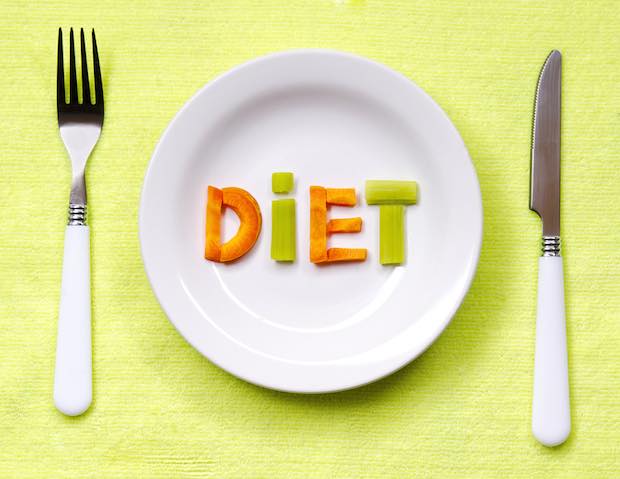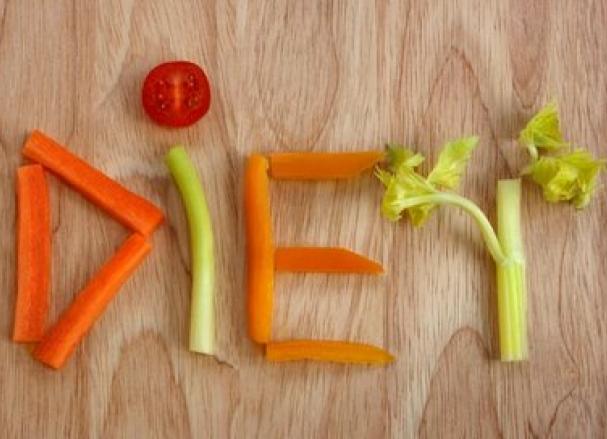Losing weight is a joint New Year’s resolution, but sticking to a diet and seeing results can be difficult. However, following a reputable diet plan can help people lose up to 1% of their body fat weekly. Overweight individuals may see even more significant results, and as people get closer to their ideal weight, progress may slow down.
However, a general guideline is that following a healthy diet plan takes about 12 weeks to see significant results. Many different diets can lead to weight loss, so finding one that fits a person’s lifestyle and preferences is essential. However, anyone can reach their weight loss goals with dedication and perseverance.
Following the most reputable diets (low-carb, paleo, intermittent fasting, the zone, etc.), you can expect to lose up to 1% body fat per week as a rough yardstick. Of course, overweight individuals can expect to lose a bit more than this, and as you get leaner, progress may slow down, but a rough ballpark would be 12 weeks.
Losing fat is a journey that requires patience, dedication, and consistency. Fat loss, while not always linear, can be achieved in increments. Start by making minor changes to your diet and gradually increasing your activity level. In 2-3 months, you will start to see actual results! Remember to stay dedicated and consistent; you will reach your goals quickly!
You can generally lose 1-2 lbs of mostly fat per week by maintaining a daily 500–1000 calorie deficit. At higher body fat percentages, such as those around 15%, you will probably be able to lose fat versus lean body mass (muscle) at a ratio highly favorable to losing fat (close to 100% fat loss).
As you lower body fat, you should slowly lose weight per week to preserve as much lean body mass as possible. Otherwise, you’ll lose weight, but a good chunk of that weight loss will be muscle loss, which will dampen how fit you look despite the fat loss.
Once you get to 12-13% BF, you will have to keep your diet very strict, and from that point on, you should probably expect a good 4-6 weeks before reaching 10%.
Before that, you could achieve from 21 to 14% BF in around eight weeks. But, of course, this will be if you maintain at least a 500-calorie deficit daily.
In summary, it is at least three months if you never fall off the wagon with your diet or training regime. A more realistic estimate will probably put you at around 4 to 7 months if you end up screwing up a couple of times a month.
What is body fat percentage, and why should you care?
Body fat percentage is the amount of fat your body stores compared to its total weight. For example, if you weigh 150 pounds and have 30 pounds of body fat, your body fat percentage would be 20%.
Most people should aim for a body fat percentage that falls within the healthy range, generally between 18% and 24% for men and 25% and 31% for women. There are several reasons why you should care about your body fat percentage.
First, carrying too much body fat can lead to several health problems, such as heart disease, diabetes, and joint pain.
Second, excess body fat can impact your appearance, making you look heavier than you are. Finally, high body fat levels can make it more difficult to perform physical activities and exercise effectively.
By understanding your body fat percentage and taking steps to keep it within a healthy range, you can enjoy a variety of benefits for both your health and your appearance.
How to calculate your body fat percentage?
Body fat percentage is the amount of fat in your body compared to lean mass. You must know your weight and waist measurements to calculate your body fat percentage. First, weigh yourself on a scale. Then, measure your waist at the narrowest point.
Finally, divide your weight by your waist measurement. The resulting number is your body fat percentage. A healthy body fat percentage for men is between 8 and 19%. For women, it is between 21 and 33%. If your body fat percentage is outside these ranges, speaking with a doctor to discuss how you can improve your health is essential. Calculating your body fat percentage can help you to understand your health better and make informed decisions about diet and exercise.
How to lose body fat percentage the right way?
Losing body fat percentage can be a challenge, but it’s important to remember that there’s no one “right” way to do it. While crash diets and fad workouts might promise quick results, they usually need to be more sustainable in the long run. So instead, you can focus on minor changes to your diet and exercise routine that you can stick with for the long haul.
Over time, these healthy habits will help you shed excess body fat and improve your overall health. Remember that everyone’s body is different, so there’s no need to compare yourself to others. Instead, focus on your progress and let go of any perfectionist tendencies. Losing body fat percentage is possible with dedication and consistency—and a little bit of patience.
How long will it take to go from 20% body fat to 10% body fat?
Losing body fat can be a challenge, but it’s essential to maintain healthy body composition. The amount of body fat you have is determined by many factors, including your diet, exercise routine, and genetics. While there is no one-size-fits-all answer to this question, some general guidelines can help you estimate how long it will take to lose body fat.
It will likely take several months of consistent effort if you’re currently at 20% body fat and want to get down to 10%. This includes eating a healthy diet and exercising regularly. You may also need to adjust your lifestyle habits, such as getting more sleep and managing stress. However, with dedication and perseverance, you can reach your goal of reducing your body fat percentage.
What are some common mistakes people make when trying to lose weight?
Trying to lose weight can be an uphill battle, and people often make the same mistakes repeatedly. Here are some of the most common weight-loss blunders:
Skipping meals: It may seem easy to cut calories, but it can backfire. When you skip meals, your metabolism slows down to conserve energy, and you’re more likely to overeat later in the day.
Eating too much-processed food: Processed foods are often high in sugar, salt, and unhealthy fats, making it difficult to lose weight. Instead of reaching for processed snacks, try snacking on whole fruits and vegetables.
Needing more sleep: Getting enough sleep is essential for weight loss. When you don’t get enough rest, your body produces more hormone cortisol, which can lead to cravings for high-fat, high-sugar foods.
Exercising too much: Too much exercise can be counterproductive when trying to lose weight. If you need to give your body more time to rest, you may become burned out and less likely to stick with your workout routine.
How can I make sure I’m losing fat and not muscle?
The key to losing fat and not muscle is creating a calorie deficit while maintaining a high protein intake. Protein is essential for preserving muscle mass, so it’s vital to ensure you get enough protein even when cutting calories. A good general rule of thumb is to consume 0.7-1 gram of protein per pound of body weight.
So, if you weigh 175 pounds, you should eat between 122 and 175 grams of protein daily. In addition to protein, it’s also essential to include other nutrients in your diet, such as healthy fats and carbohydrates. These will help to keep your energy levels up and prevent your body from breaking down muscle for fuel.
Finally, stay hydrated; dehydration can lead to muscle loss, so drinking plenty of water throughout the day is essential. By following these simple tips, you can ensure you lose fat and not muscle.
Should I be worried about loose skin when I lose weight?
You may notice some loose skin if you’ve recently lost significant weight. While this can cause concern, there’s no need to worry about it. In most cases, loose skin is perfectly normal and will eventually tighten. However, you can do a few things to help speed up the process.
First, make sure you’re getting enough protein in your diet. Protein helps to support collagen production, which will help to firm up your skin. Second, try dry brushing your skin daily.
This will help to stimulate blood flow and promote collagen production. Finally, stay hydrated by drinking plenty of water each day. By taking these steps, you can help ensure that your skin will soon return to its healthy, happy state.
What are some tips for staying motivated while trying to lose weight?
When it comes to trying to lose weight, motivation is critical. Unfortunately, giving up and falling back into old habits can be accessible without it. So how can you stay motivated throughout your weight loss journey? Here are a few tips:
Find Your Why: First, it’s essential to determine why you want to lose weight. Is it for your health? To increase your self-confidence? Having a clear and concise reason for losing weight will help you stay focused when things get tough.
Set Realistic Goals: It’s also important to set realistic goals. If you place your sights too high, you’re more likely to become discouraged when you don’t see results as quickly as you’d like. But if you set smaller, achievable goals, you’ll be more likely to stay on track and reach your ultimate goal.
Find a Support System: Losing weight can be difficult and lonely, but it’s essential to find a support system to help you through it. Having people in your corner will make the process much easier, whether that’s friends or family members who will offer encouragement or a professional coach or counselor who can provide guidance and advice.
Track Your Progress: Finally, be sure to track your progress. This can be done by keeping a journal, taking progress photos, or tracking your weight and measurements. Seeing the results of your hard work can be a great motivator to keep going.
By following these tips, you can stay motivated and on track throughout your weight loss journey.
How do I know if I’m losing fat or water weight?
It can be challenging to tell the difference between fat loss and water weight loss. One way to tell is by looking at your urine. If you are dehydrated, your urine will be dark yellow or brown. If you are properly hydrated, your urine will be a light yellow. Another way to tell the difference is by how you feel. Fat loss will result in a gradual decrease in body size and an increase in energy levels. Water weight loss will result in a sudden drop in body size and increased fatigue.
Finally, fat loss will show up as a decrease on the bathroom scale, while water weight loss will not. By keeping these things in mind, you can better understand whether you are losing fat or water weight.
What are some common causes of weight loss stalls?
Many people trying to lose weight find themselves stuck at a certain point, even when following a healthy diet and exercise plan. This weight-loss stall can be frustrating, but it is essential to remember that many factors can contribute to a booth. Here are some of the most common causes:
1. Eating too few calories: When you cut back on calories, your body goes into starvation mode and starts to hold on to fat stores. To avoid this, eat enough to support your weight loss goals.
2. Not exercise: Exercise is essential for burning calories and boosting metabolism. If you’re not getting enough exercise, it could be one of the reasons why you’re not losing weight.
3. Unhealthy food choices: Even if you’re eating fewer calories, if you’re making unhealthy food choices, it can still sabotage your weight loss efforts. Ensure you eat plenty of fruits, vegetables, and lean protein.
4. Stress: Stress can cause your body to produce hormones that lead to weight gain. Try to find ways to reduce stress, such as yoga or meditation.
5. Medications: Certain medications can cause weight gain or make it harder to lose weight. Talk to your doctor about alternatives if your prescription is to blame.
By understanding some of the common causes of weight loss stalls, you can be better prepared to overcome them.
Weight loss is a journey, not a race.
It’s important to remember that losing weight is a journey, not a race. There will be ups and downs, and there is no need to try to lose weight too quickly. Slow and steady wins the race when it comes to losing weight.
How can I break through a weight loss plateau?
Losing weight is challenging for many people, and breaking through a weight loss plateau can be especially difficult. However, there are some things that you can do to increase your chances of success.
First, ensure you stay consistent with your diet and exercise routine. If you have been eating healthy and working out regularly but have not seen results, try adding variety to your practice. This could mean trying new exercises or changing up your diet. Consider tracking your progress more closely. This could involve weighing yourself daily or keeping a food diary.
A weight-loss plateau occurs when your body becomes accustomed to your new diet and exercise routine and burns fewer calories. You must shock your system by changing your way to break through a weight-loss plateau. This can mean anything from adding an extra workout to your week to eating more protein. You can kick-start your metabolism and start seeing results again by making small changes.
Finally, keep going if you see results immediately. Weight loss is a slow process, so be patient and keep working towards your goals.
What are some signs that I’m not eating enough calories?
Fatigue is one of the most common signs of not eating enough calories. When your body doesn’t have enough energy, it starts to feel tired. This can happen even if you’re getting enough sleep. So if you want to nap in the middle of the day or struggle to get through your workout, it could be a sign that you need to eat more.
Another common sign of undereating is constantly feeling cold. This happens because your body is trying to conserve energy by slowly burning calories. So if you reach for a sweater on a warm day or shiver when everyone else is comfortable, it could be a sign that you’re not eating enough calories. Talk to your doctor or a registered dietitian for more advice if you’re concerned about calorie intake.
What are some signs that I’m eating too many calories?
It’s no secret that weight gain can be caused by consuming too many calories. But did you know there are other signs that you may be eating too many calories? For example, if you find yourself constantly snacking or grazing throughout the day, this could be a sign that you’re taking in more calories than your body needs. Other common symptoms include feeling bloated after meals, having difficulty losing weight, and constantly feeling tired.
You might be eating too many calories if:
- You’re gaining weight without trying to.
- You feel tired all the time.
- You’re always hungry, even after meals.
- You have cravings for unhealthy foods.
- You have trouble concentrating.
- You get irritable quickly.
- You’re always bloated after meals.
- You get sick often.
If you’re experiencing these signs, it might be time to reassess your diet and ensure you’re not consuming more calories than your body needs. Try tracking your intake for a few days to see any patterns. If you eat too many calories, cut back gradually until you reach a healthy balance.
Remember, small changes can make a big difference! First, you must talk to your doctor or a registered dietitian if you suspect you’re eating too many calories. They can help you determine how many calories you should consume based on age, activity level, and other factors. Minor changes to your diet can make a big difference in your overall health.
What is the difference between fat loss and weight loss?
When people talk about wanting to “lose weight,” they usually mean that they want to lose fat. But what is the difference between fat loss and weight loss? Weight loss refers to a reduction in the total amount of mass, which can be achieved by losing fat, muscle, or water. Fat loss, however, refers explicitly to reducing body fat.
For most people, the goal is to lose fat and not muscle. This is because muscle tissue is dense and heavy, so even a tiny amount of muscle mass can contribute significantly to body weight. In addition, muscle is an active tissue that burns calories even at rest, so it is beneficial to maintain or even increase muscle mass when trying to lose weight. Thus, while weight loss can be achieved in many ways, fat loss is the more desirable goal.
What are some tips for avoiding weight regain after weight loss?
Anyone who has ever tried to lose weight knows that it is a challenging task. However, losing weight is just half the battle; the real challenge is keeping it off—unfortunately, many people who successfully lose weight regain it after some time. There are several reasons why this happens, but there are also some simple strategies that can help to prevent weight regain.
One of the most important things to do is to avoid drastic calorie restrictions. When you severely restrict your calories, your body goes into “starvation mode” and starts to hold on to fat stores. So instead of crash dieting, focus on gradually changing the eating habits that you can stick with over the long term.
It is also essential to stay active and build muscle mass. Muscle burns more calories than fat, so you may reduce your body fat percentage even if you don’t see a change on the scale. In addition, regular exercise helps to keep your metabolism ticking along at a higher rate, which can help to prevent weight gain.
Finally, could you make sure to get enough sleep each night? Sleep deprivation can lead to increased hunger and cravings for unhealthy foods. By getting seven to eight hours of sleep each night, you can help to avoid these issues.
Could you talk to your doctor or a registered dietitian if you’re struggling to lose weight? They can help you identify any obstacles standing in your way and develop a plan to get you back on track. Losing weight is not easy, but it is certainly worth the effort. With perseverance, you can reach your goals and improve your health.
In what order should I lose fat, gain muscle, and improve my cardiovascular fitness?
There’s no one-size-fits-all answer to this question, as the best approach will vary depending on your individual fitness goals. However, if you’re looking to improve your overall health and fitness, there’s a general order you should follow: first, focus on losing excess body fat; then, turn your attention to building muscle; and finally, work on improving your cardiovascular fitness.
Losing body fat should be your priority, as carrying excess weight can lead to many health problems. You can start building muscle once you’ve achieved a healthy body weight. Building muscle will help to tone your body and improve your strength and endurance.
Finally, you can improve your cardiovascular fitness once you have a solid fat loss foundation and muscle gain. This will help you to manage your stress levels better and maintain a healthy heart. So, whatever your fitness goals, following this order will help you achieve them most efficiently.
What are some helpful resources for learning more about losing fat?
When it comes to losing fat, various helpful resources are available. One excellent resource is the internet. Several websites offer tips and advice on how to lose fat effectively. In addition, there are many online forums where people can share their experiences and ask for advice from others—other helpful resource books. Finally, there are many excellent books on the subject of losing fat, and they can provide valuable information and advice.
Finally, speaking with a healthcare professional can also be extremely helpful. They can provide guidance and recommendations based on your specific situation. By taking advantage of these resources, you can learn about losing fat and achieving your desired results.
When it comes to weight loss, it’s essential to understand the difference between losing fat and losing weight. Although they may seem like the same thing, they’re pretty different.
Losing weight means reducing the amount of mass in your body, regardless of what that mass comprises. So, if you lose muscle tissue, water weight, or fat, you’ve technically lost weight. On the other hand, losing fat specifically refers to shedding stored body fat. Since muscle tissue is denser than fat tissue, you can lose fat and gain muscle simultaneously, changing your body composition but not necessarily a difference on the scale.
So, what’s the bottom line? If your goal is to lose weight, then any method will do. However, to improve your body composition and lose fat, you must focus on strategies to help you achieve that goal.
When it comes to weight loss, there are a variety of different methods that can be used. Some people prefer to focus on losing weight overall, while others may be more interested in losing fat. Whatever your goals, it’s essential to understand the difference between losing weight and losing fat.
Losing weight means reducing the amount of mass in your body, regardless of what that mass comprises. So, if you lose muscle tissue, water weight, or fat, you’ve technically lost weight. On the other hand, losing fat specifically refers to shedding stored body fat. Since muscle tissue is denser than fat tissue, you can lose fat and gain muscle simultaneously, changing your body composition but not necessarily a difference on the scale.
To lose fat specifically, you must focus on strategies to help you achieve that goal. Several different methods can be used to lose fat, and by taking advantage of these methods, you can finally achieve the results you’re looking for. So, don’t wait any longer; start your fat loss journey today!




chris F
This was very helpful.
Thanks guys